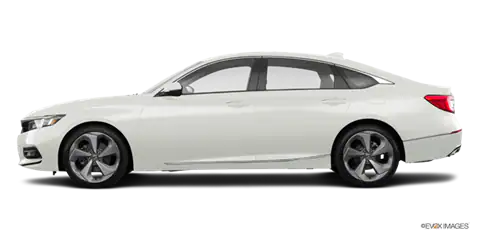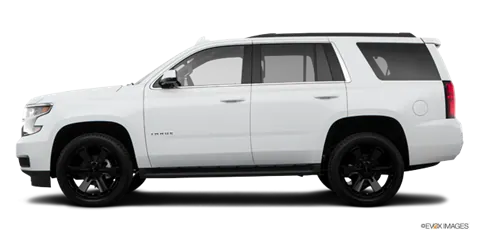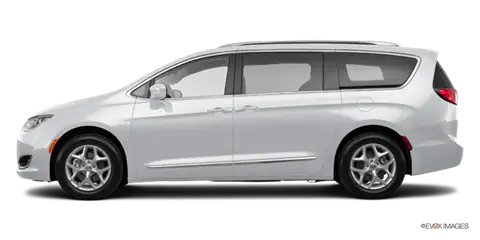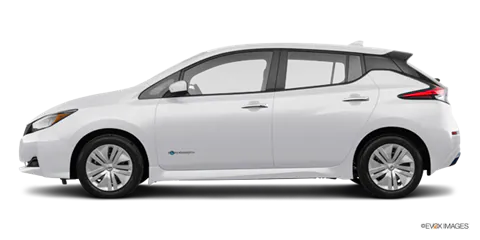Whether you’re an early adopter or a staunch holdout, in-vehicle infotainment will almost certainly play a pivotal role in your next vehicle purchase. Not to mention the fact that as most new cars boast a similarly high degree of efficiency, reliability, and luxury, infotainment has become a key differentiator among automakers. This increasingly critical component of the acquisition process prompted us to construct an awards program centered on excellence in connected car technology. Kelley Blue Book’s inaugural Best Auto Tech Award recognizes six touchscreen infotainment platforms deemed worthy of acclaim for their ability to enhance driving pleasure while fostering safety. One console in particular embodied these qualities in spades, and stood above the rest when it came to feature content, response times, ease-of-use, and value.
Whether you’re an early-adopter or a late-comer to the tech world, in-vehicle infotainment will almost certainly play a pivotal role in your next vehicle purchase. While today’s new cars offer a wide variety of styles, features and creature comforts, infotainment has become a key differentiator among automakers. This increasingly critical component of the shopping process prompted us to construct an awards program centered on excellence in connected car technology: The Kelley Blue Book Best Auto Tech Award.
Since nearly two-thirds of Americans now own a smartphone, for a system to be eligible it had to come fitted with two essential features: Apple CarPlay and Android Auto. Each system was then tested over the course of two weeks in both static and normal driving conditions. Judging criteria included, but was not limited to, native and off-board voice recognition quality, Apple CarPlay and Android Auto connectivity and performance, embedded navigation accuracy, response times, menu clarity and intuitive operation from behind the wheel.
The inaugural Best Auto Tech Award recognizes six touchscreen infotainment platforms deemed worthy of acclaim for their ability to enhance driving pleasure while fostering safety. But one console in particular embodied these qualities in spades, and stood above the rest when it came to feature content, response times, ease-of-use and value.
2016 Best Auto Tech Award Winner: Volvo Sensus
Test Vehicle: 2016 Volvo XC90
Volvo Sensus laid claim to the 2016 Best Auto Tech Award for its winning combination of vivid graphics, speedy response times, discernable icons and split-screen Apple CarPlay in what is arguably the least distracting touchscreen infotainment package on the market. Better yet, this system is issued as standard fare in the 2016 XC90.
The heart of Sensus is a tablet-style, vertically oriented 9-inch infrared display powered by Nokia’s revered HERE Auto Services architecture. Those already familiar with the pinch and swipe interactivity of a smartphone will feel right at home with Sensus. The advanced voice recognition engine allows you to verbally input a navigation address while on the go as well as adjust the climate. Given the fact that the display collects more fingerprints than Horatio Caine, we appreciated the everyday usability of the on-board voice command system.
We’re also big fans of the home screen, which clearly lays out navigation information, Bluetooth status, media metadata, and the Apple/Android interfaces without over-cluttering the display. And, unlike every other representation of CarPlay and Android Auto, these interfaces won’t take over the entire display thanks to the touchscreen’s extra-large, vertically oriented design. This means there’s no need to switch from CarPlay/Android Auto back into Sensus to access basic functions like climate and vehicle settings. Such a harmonious merger between consumer and automotive technology were pivotal in Sensus’ rise to the top in this year’s Auto Tech Awards.
2016 Best Auto Tech Award: The Finalists
Volvo’s Sensus system was the clear winner in this competition, but that doesn’t mean it makes sense for every car-shopping tech head to run out and buy a Volvo. Here are some other standouts to be aware of, keeping in mind that Apple CarPlay and Android Auto compatibility were prerequisites for invitation.
Kia UVO

Test Vehicle: 2016 Kia Optima
UVO turned out to be the surprise hit of the test group. Despite its feature-rich layout, less-experienced users had no trouble navigating through UVO’s well-thought-out interface. The quick-witted conversational voice recognition engine allowed users with little-to-no knowledge of basic voice prompts to reliably execute tasks without ever taking their hands off the wheel. Aside from some intermittent dead reckoning issues, the embedded navigation system performed as expected, providing accurate ETAs and up-to-date highway service info. We’re also big fans of UVO’s smartphone-based, subscription free telematics service known as eServices. Wrap all this simplified goodness into a high-resolution, 8-inch touchscreen, and the result is the newest benchmark among mainstream infotainment systems.
Volkswagen MIB II
Test Vehicle: 2016 Volkswagen Passat
Volkswagen is about as well known for its infotainment systems as it is for its tractors (they produce a tractor no one cares about). The launch of MIB II aims to change all that, beginning with sharper graphics, streamlined menu controls, and the inclusion of pinch and swipe gestures. The fonts, colors, and navigation maps still feel a bit dated, but the system as a whole earned high marks for its responsive nature and class-exclusive proximity sensing technology, which redisplays hidden menu icons as your hand approaches the screen. It may not win any beauty contests, but VW’s MIB II leaves little to be desired when it comes to smartphone connectivity and user-friendliness.
Chevrolet MyLink

Test Vehicle: 2016 Chevrolet Spark
The entry-level iteration of Chevy’s MyLink infotainment platform is, by design, the most straightforward of its kind. Pre-loaded with only rudimentary functions like radio, media, and OnStar telematics, MyLink Light (as we like to call it) relies heavily on the power of your smartphone for navigation, voice commands and specific multimedia applications. Given the class of car in which it’s equipped, MyLink Light is a standout for two reasons. First, it provides smartphone users with all the connectivity they’ll ever want for no extra cost. Second, and much more important, it encourages younger drivers to utilize their phones exclusively through an automotive-friendly interface.
HondaLink
Test Vehicle: 2016 Honda Accord
Not unlike its product portfolio, Honda’s HondaLink infotainment system is one of the more well-rounded of the bunch. The Android-based operating system responds eagerly to inputs, while the embedded Garmin navigation system charmed us with its customizable features and intuitive destination entry screen. Coming in equally handy were Map, Audio and Source header icons that allowed us to quickly navigate between native functions without returning to the home screen. We did encounter some problems with the factory voice recognition system and the icons were a bit small for our taste, but HondaLink otherwise shines as an affordable, easy-to-operate infotainment system.
Cadillac CUE
Test Vehicle: 2016 Cadillac CTS
One of the first infotainment systems to incorporate tap, spread, and pinch gestures, Cadillac Cue was undoubtedly an infotainment pioneer when it debuted in the 2013 Cadillac XTS. Backed by a triple-core processor, Cue features an expansive conversational voice recognition engine, proximity sensing, and an 8-inch capacitive touchscreen with haptic feedback that confirms touch inputs with a slight vibration. With response times varying from lethargic to swift, we found it best to rely on CUE’s consistently accurate voice-command suite. We would be remiss if we didn’t also mention the handful of unexpected system failures along with the display’s propensity for smudges and scratches. Nevertheless, CUE has a lot of potential. Once the bugs are squashed for good, expect to see CUE vying for the top step of the podium.























